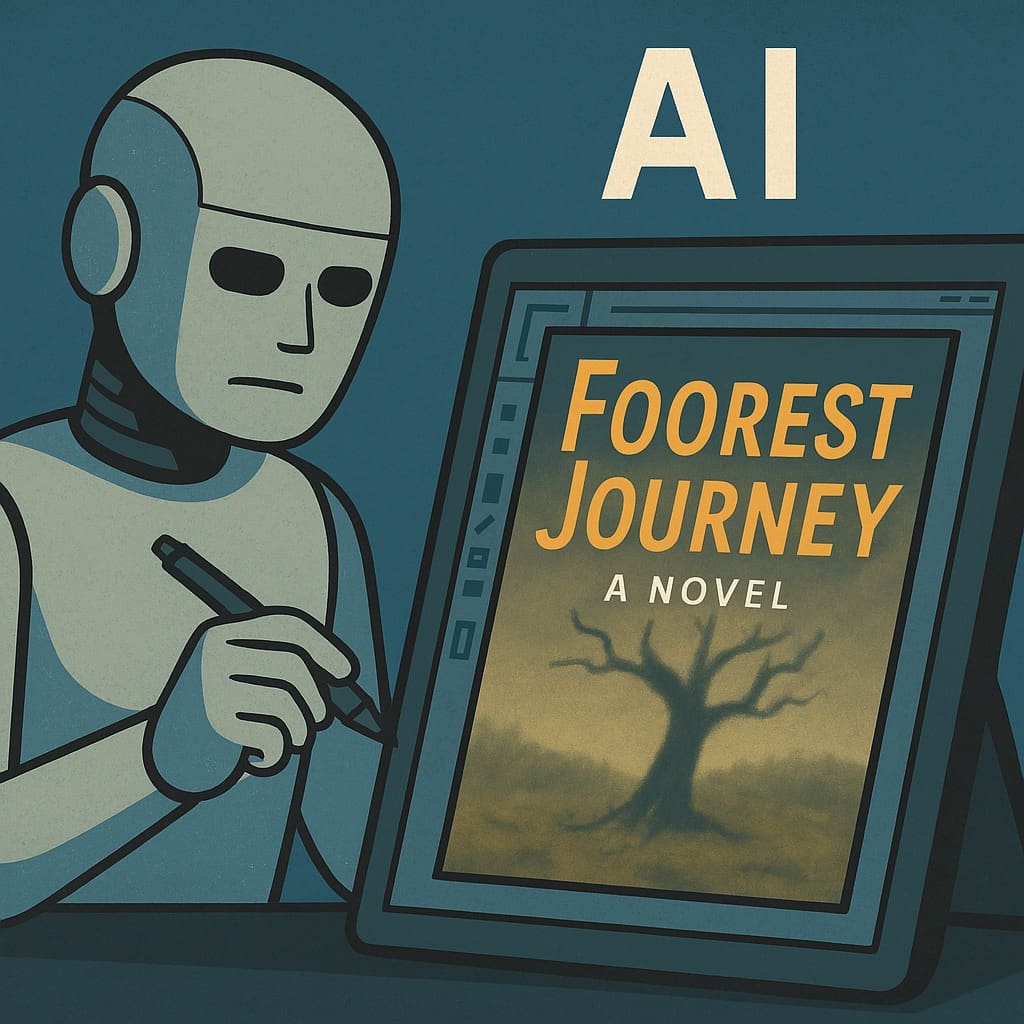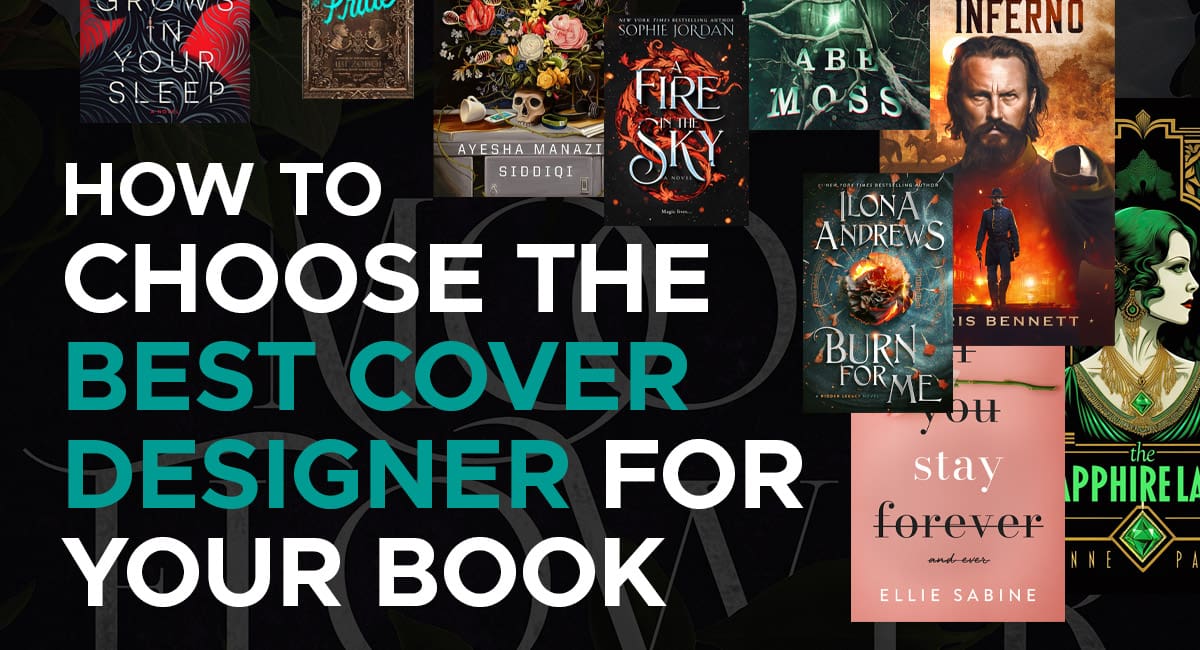So, AI book covers. It feels like you can’t browse author forums or social media for five minutes without tripping over a discussion about them. Is Artificial Intelligence the secret weapon budget-conscious indie authors have been dreaming of, or is it mostly hype hiding a minefield of problems? If you’re feeling caught in the crossfire of opinions, you’re not alone.
Let’s try to untangle this, looking at the real picture for indie authors navigating the scene in April 2025. This isn’t about breathless predictions or doomsday warnings; it’s a practical look at what AI can actually do for your cover right now, versus where it still falls short (sometimes spectacularly).
Full disclosure: At DAMONZA, playing with pixels is our day job, so yes, we’ve spent plenty of time exploring AI tools. Our conclusion? AI is a genuinely fascinating, occasionally brilliant tool in the design arsenal. Think of it like a powerful new Photoshop filter or plugin – amazing potential in the right hands, but it doesn’t magically bestow design talent or strategic thinking. Is it replacing skilled human designers who understand the alchemy of a great cover? Not happening yet. This guide shares our professional perspective, aimed squarely at helping you, the indie author, make smart choices.
The Siren Song: Why AI Whispers Sweet Nothings to Your Wallet
The Cost Factor: Let’s be real, generating an AI image costs pocket change – maybe less than your daily caffeine habit for a month’s access. Compare that to hiring a professional designer (who, you know, needs to buy groceries), and the upfront saving looks incredibly attractive. We understand the appeal.
The Speed Advantage: Need cover ideas now? AI can spit out visuals with startling speed. For authors on a tight timeline, this instant gratification beats the often necessary back-and-forth of the human design process.
The Promise of Control: Tools like Midjourney, and now ChatGPT, offer the tantalizing idea of being your own art director, generating images without needing a design degree or mastering complex software.
These points are valid on the surface. But as with most things that seem too good to be true, there are important catches.
Navigating the Terrain: Potential Potholes & Practical Realities in 2025
The Quality Gap (When AI Flies Solo): Forget those hyper-polished AI showcase images for a moment. Consistently getting a truly professional, commercially viable book cover from AI alone, especially DIY, is still a tricky proposition. Why? Because AI, left to its own devices, often stumbles on the fundamentals:
- Typography: This is usually the biggest giveaway. AI just doesn’t get typography – the art of making text look good and communicate effectively. Expect awkward spacing, weird font choices, and titles that look stuck on as an afterthought rather than integrated into the design. It’s often the first thing that screams “amateur.”
- Conceptual Vacancy: AI follows instructions, sometimes with unnerving literalness. It doesn’t feel your story, understand its emotional core, or grasp the subtle visual cues that resonate with your specific genre readers. Concepts generated solely by AI can feel generic or miss the mark entirely.
- Composition Conundrums: Good design guides the eye using balance, flow, and focal points. AI doesn’t inherently understand these principles, often producing images that are cluttered, unbalanced, or simply don’t “pop” effectively as a thumbnail or on a shelf.
The Ethical & Legal Maze (Proceed with Awareness):
- Copyright Quandaries: You’ve probably heard the buzz: works made only by AI often aren’t copyrightable in places like the US (as of April 2025). Is this catastrophic? Maybe not uniquely so. Remember how many covers already use the same few stock photos, limiting visual exclusivity anyway? The practical distinctiveness of your cover arguably relies more on the total design execution (layout, stellar typography, unique combination of elements) than just the copyright status of one base image. Still, it’s a legal gray area to be aware of.
- The Ghost in the Machine (Training Data): A bigger ethical question mark hangs over how most AI models were trained – by absorbing billions of images, including much copyrighted work, often without permission. Using tools built this way involves an ethical consideration that hasn’t been fully resolved.
- Check the T&Cs: Always, always read the fine print of the AI tool you’re using regarding commercial rights. Don’t assume you can just use anything it generates on a product for sale.
- Reader Radar: Readers and reviewers are getting better at spotting AI-generated art, especially when it’s not skillfully integrated. A cover that looks noticeably “AI” due to quality issues can unfortunately colour perceptions of the book itself, suggesting maybe corners were cut elsewhere too.
AI as a Powerful Collaborator: The DAMONZA Approach (Strategic & Optional)
So, if AI has these issues, how can it be used productively? At DAMONZA, we approach AI as a powerful collaborator or component, integrated thoughtfully into our human-driven design process – but only when it genuinely serves the project. Our creative concepts, strategic thinking, and artistic direction always come from our human designers.
Crucially, our use of AI is both strategic and optional. It’s not a standard ingredient in every cover recipe. We consider using AI tools only when we believe they are the best route to achieving a specific, superior creative outcome that might be difficult or impossible with stock photography alone. Importantly, we only proceed with incorporating AI-generated elements if you, the author, are fully informed and give your enthusiastic “Okay!” If traditional methods (stock images, illustration) can nail the brief beautifully, or if you’d rather stick to those, that’s absolutely what we do.
When AI does join the team (with your blessing!), here’s how it contributes:
- Creating the “Unfindable” Element: This is where AI can be a game-changer. Need that very specific alien plant, a unique magical artifact described in your book, or a character viewpoint that stock sites just don’t offer? Our designers can leverage AI to generate these custom visual assets (sometimes major ones) tailored precisely to the concept. Often, this results in a more original and conceptually stronger cover than trying to wrestle ill-fitting stock images into submission.
- The Indispensable Human Layer: Getting an AI image is step one. The real craft lies in what the human designer does next:
- Directing the AI: It takes skill and vision to write prompts that effectively guide the AI.
- Curating the Output: Choosing the diamond from the digital rough AI produces.
- Integrating, Refining, Enhancing: Skillfully blending AI elements with other graphics, ensuring lighting/perspective match, potentially painting over sections, adding textures, and making it all look seamless and intentional.
- Mastering Typography & Layout: This cannot be stressed enough – all text, title treatments, and the overall composition are meticulously crafted by the human designer. This is where professional polish happens.
- Supercharging with Assistive AI: Beyond creating images from scratch, AI tools are fantastic assistants. Upscaling images without losing detail (thanks, Magnific AI!), changing the mood with lighting adjustments, applying unique styles, extending backgrounds seamlessly – these AI-powered features give designers more creative firepower. Have a look at The Right Way to Use AI as Part of Your Book Cover & AI in Design: Just Another Tool in a Cover Designer’s Toolkit?
Your Decision Framework: Key Questions for Indie Authors
- Budget vs. Ambition: Is saving a few hundred dollars worth risking quality, legal standing, and reader perception for my professional author career?
- Originality Needs: How important is a unique, ownable cover brand for my book/series?
- Risk Tolerance: Am I comfortable with the current legal and ethical ambiguities surrounding AI output?
- Quality Standard: Does my book deserve a cover crafted with professional skill, or is “good enough” truly acceptable?
- Time Investment: Do I have the time and skill to effectively prompt, refine, and integrate AI elements professionally (including typography), or is my time better spent writing?
Conclusion: Choose Your Tools Wisely
AI is a powerful, evolving technology, but for professional book covers in 2025, it’s still largely a component best used within a human-led process, not a standalone solution.
While the dream of a perfect, free, instantly generated AI cover remains mostly a dream due to persistent quality issues (especially with text) and unresolved ethical questions, AI is proving itself a valuable component in the professional designer’s toolkit – when used strategically, ethically, and skillfully. Guided by human expertise (and with author consent), it can help create otherwise impossible visuals and contribute to stunning, unique covers.
The crucial takeaway isn’t if AI exists, but how it’s employed. Relying solely on raw AI output is like expecting a calculator to write your novel. Partnering with design professionals who understand how to harness these tools appropriately ensures your cover gets the benefit of cutting-edge tech without sacrificing the essential human elements: creativity, strategy, technical skill, and market understanding.
Think carefully about your goals, understand the tools, and make the choice that best reflects the quality and professionalism of the book you’ve poured your heart into.
Not sure if your current cover is working? You’re not alone. One of the most common reasons indie books underperform is simply: the cover’s not doing its job.
If you’d like honest, professional feedback — without fluff or flattery — we offer a free cover review service. No strings attached, no AI involved. Just a real specialist cover design creative director telling you what’s working, what’s not, and how it stacks up in your genre.
If your book deserves better (and it probably does), this is a good place to start.




